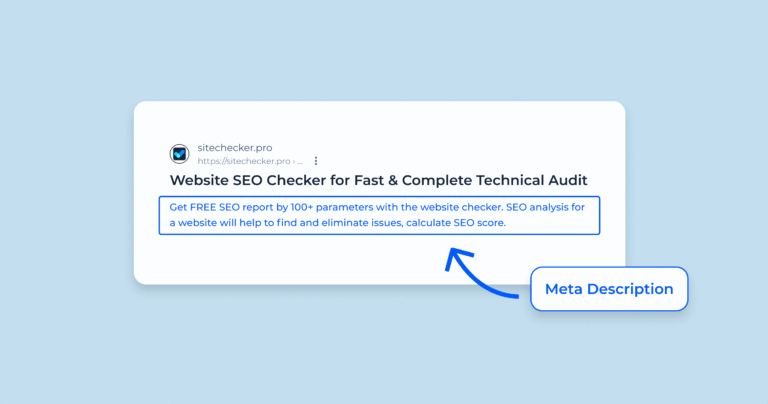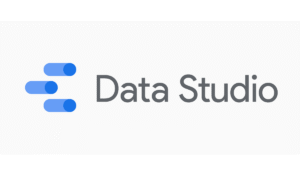In a digital world flooded with content, standing out in search results is no longer optional — it’s essential. One of the most underrated yet powerful tools to capture attention in search engines is this small snippet of text that summarizes your page. It may seem minor, but it can make a major difference in whether someone clicks on your link or scrolls past it. A strong meta description acts like your website’s elevator pitch — clear, persuasive, and impossible to ignore.
But what exactly is this snippet? Why does it matter for your SEO strategy? And how can you write one that actually drives traffic? In this guide, we’ll uncover everything you need to know — from best practices to common mistakes — to help you create compelling summaries that not only attract more clicks but also strengthen your presence in search engine results. If you’re serious about boosting visibility and engagement, this article is for you.
What Is a Meta Description?
If you’ve ever wondered, “what is a meta description?”, the answer is simple: it’s a brief snippet of text embedded in a webpage’s HTML that summarizes the content of that page. This snippet, often referred to as the SEO meta description, provides both search engines and users with a concise preview of what the page is about.
Unlike the page title, which appears as a clickable headline in search engine results pages (SERPs), this snippet shows just below the title, offering additional context. It typically ranges between 150 to 160 characters—short yet impactful.
From an SEO perspective, this snippet is crucial because it directly influences user behavior. Although it does not affect your site’s ranking algorithm directly, a clear, relevant, and compelling meta description can significantly boost your page’s click-through rate (CTR). When users see a well-written preview, they are more likely to choose your link over others.
While search engines like Google sometimes generate their own snippets based on page content, crafting your own SEO meta description allows you to control the message that potential visitors receive. That’s why understanding how to optimize this element is a fundamental part of any effective SEO strategy.
Why Meta Descriptions Matter for SEO
Although meta descriptions do not directly impact search engine rankings, they play a crucial role in the overall SEO strategy by influencing user behavior and engagement. Here’s why they matter:
- Increase Click-Through Rate (CTR):
A well-written snippet acts as a mini advertisement for your webpage. It helps grab the attention of users browsing search engine results pages (SERPs), encouraging them to click your link instead of others. - Improve User Experience:
These summaries set clear expectations about the page content. When users find content that matches the description, they are more likely to stay longer and engage with your site, reducing bounce rates. - Indirect SEO Benefits:
While not a direct ranking factor, a higher CTR signals to search engines that your page is relevant and valuable. Over time, this can positively influence your search rankings. - Control the Message:
Search engines sometimes generate snippets automatically, which may not represent your page accurately. Writing your own SEO meta description allows you to control how your content is presented in search results. - Boost Brand Trust:
Clear and compelling snippets contribute to your brand’s professionalism and credibility, helping you stand out in competitive search results.
In summary, crafting effective meta descriptions is essential because it improves visibility, attracts targeted visitors, and enhances user engagement — all key ingredients for successful SEO. Partnering with a trusted SEO company for On-Page SEO Optimization ensures that your meta descriptions, along with other key elements like titles, headers, and internal links, are fully aligned with search intent and best practices—boosting your performance in competitive search results.
How to Write an Effective Meta Description
Understanding what a meta description is the first step toward mastering your website’s SEO. A well-crafted SEO snippet serves as a concise summary that encourages users to click on your link in search engine results. To write an effective one, consider the following key points:
Pay Attention to Description Length
The length is crucial for ensuring your full message appears in search results without being cut off. The recommended character limit Google prefers typically falls between 150 to 160 characters. Staying within this limit helps your description display properly and improves readability.
Include Relevant Keywords Naturally
Incorporate important keywords related to your content, but avoid keyword stuffing. Using the right keywords enhances SEO by signaling relevance to search engines and matching user queries.
Write a Clear and Compelling Summary
Your snippet should act as a mini-advertisement, clearly summarizing the page content while enticing users to visit. Use action-oriented language and, when appropriate, include a call-to-action to increase engagement.
Avoid Duplicate Descriptions
Each page on your website should have a unique tag to prevent confusion for search engines and users alike. Duplicate descriptions can dilute the effectiveness of your SEO efforts.
Use Optimization Tools
Various tools such as Yoast SEO, SEMrush, and Ahrefs can help analyze your snippet’s length, keyword usage, and overall effectiveness. These tools provide useful suggestions to refine your descriptions and ensure they meet best practices.

Good vs. Bad Meta Description Examples
Crafting an effective SEO meta description can be the difference between attracting clicks or being ignored in search results. Let’s look at some examples to understand what works — and what doesn’t.
Good Meta Description Examples
- Example 1:
“Learn how to write the perfect SEO meta description with our step-by-step guide. Discover tips on meta description length, keyword use, and boosting your Google rankings.”
Why it works: This description is clear, includes relevant keywords naturally, and invites the user to learn more. It stays within the ideal character limit, so nothing gets cut off in the search results. - Example 2:
“Explore expert tips to craft compelling meta descriptions that increase your website traffic and improve search engine visibility. Start optimizing today!”
Why it works: The description is action-oriented with a subtle call-to-action (“Start optimizing today!”) that encourages clicks. It summarizes the content effectively and targets user intent.
Bad Meta Description Examples
- Example 1:
“SEO meta description, meta description length, Google meta description, best meta descriptions, meta description tag, meta description tools.”
Why it doesn’t work: This is a keyword-stuffed list that doesn’t form a readable or engaging sentence. It feels robotic and uninviting to users. - Example 2:
“Welcome to our website. Here you can find information about SEO meta descriptions.”
Why it doesn’t work: This is too vague and doesn’t provide any compelling reason for users to click. It lacks specifics and value.
learn more about AB testing in seo and Screaming Frog Spider to know more about problems in tour webssite
Tools to Help You Optimize Meta Descriptions
Writing the perfect SEO meta description can be challenging, but luckily, several powerful tools are designed to make this task easier and more effective. These tools help you check your description length, analyze keyword usage, and ensure your text meets the character limit recommended by Google. Here are some top options you can use to optimize your snippets:
- Yoast SEO:
A popular WordPress plugin yoast offering real-time analysis. It alerts you if your description is too long or too short and provides tips to improve keyword integration and readability.
- SEMrush:
This comprehensive SEO platform includes features for auditing descriptions across your website. It highlights duplicate snippets and suggests improvements to boost your search presence. - Ahrefs:
Known for its backlink analysis, Ahrefs also provides on-page SEO tools to evaluate your website’s descriptions. It identifies pages with missing or weak text, helping enhance your site’s SEO. - Google Search Console:
Although not specifically for descriptions, it offers valuable data on how your pages appear in search results. You can monitor CTR and find which pages need better snippets. - Meta Description Length Checker:
Various free online tools check your description length against Google’s guidelines, ensuring your snippet doesn’t get cut off in search results. These tools help create concise and effective summaries.
Using these resources saves time and helps craft optimized, compelling snippets that improve your site’s visibility and click-through rates. Incorporating the right keywords and respecting length limits are key steps to mastering this important SEO element.
Common Mistakes to Avoid
Crafting an effective SEO snippet requires careful attention to detail. Avoiding common pitfalls can help you prevent losing potential clicks and harming your SEO efforts. Here are some frequent mistakes to watch out for:
Ignoring Length Guidelines:
Writing descriptions that are too long or too short can negatively impact your visibility. Exceeding the character limit means Google might truncate your text, while very short descriptions may fail to engage users. Aim for the ideal length recommended by Google—between 150 to 160 characters.
Keyword Stuffing:
Overloading your snippet with keywords might seem beneficial but often results in unreadable, spammy text. Focus on natural keyword integration to maintain relevance and readability.
Using Duplicate Tags:
Each page on your website should have a unique description tag. Duplicate texts confuse search engines and reduce your chance to rank well for different queries.
Not Matching Search Intent:
The description should accurately reflect the page content and user intent. Misleading or vague summaries may increase bounce rates as users leave quickly after realizing the content isn’t what they expected.
Neglecting to Include a Call-to-Action (CTA):
Without a compelling CTA or invitation, users might skip your link. Phrases like “Learn more,” “Discover now,” or “Get started today” encourage clicks.
Relying Solely on Automated Descriptions:
While search engines sometimes generate their own snippets, relying on this can cause irrelevant or incomplete descriptions to appear. Always write your own optimized meta description for better control over your search result appearance.
How SEO Khana Can Help You Master Your Meta Descriptions and Boost Your SEO
As a trusted local SEO expert, SEO Khana understands the unique needs of your market and ensures your descriptions align perfectly with your target audience’s search intent. Their expertise goes beyond just writing snippets; they offer a full technical SEO audit service to identify any underlying issues that might affect your site’s visibility.
Moreover, SEO Khana excels in on-page SEO optimization, which includes refining your meta tags alongside other critical on-page elements like titles, headers, and content structure. This holistic approach guarantees that every page on your website is fully optimized to perform well in search engine results.
By working with SEO Khana, you not only get expertly crafted meta descriptions but also a strategic partner focused on driving organic traffic and maximizing your SEO potential. Whether you’re a small local business or a growing enterprise, their tailored solutions in on-page SEO optimization ensure your website stands out in a competitive digital landscape.
Frequently Asked Questions (FAQs) About Meta Descriptions
- Can I use the same meta description for multiple pages?
No. Each page needs a unique summary to accurately reflect its specific content and improve SEO performance. - How do I write an effective meta description?
Focus on clear, concise language, include relevant keywords naturally, address the user’s intent, and add a call-to-action to encourage clicks. - Are there tools to help optimize meta descriptions?
Yes! Tools like Yoast SEO, SEMrush, Ahrefs, and Google Search Console can help analyze and improve these important snippets. - Does Google always use my meta description?
Not always. Google sometimes generates its own snippet based on the search query, especially if your provided description isn’t relevant or well-optimized. - What is the difference between a meta description and a meta title?
The meta title is the clickable headline shown in search results, while the description is the brief summary underneath that gives more context about the page content. - How often should I update my meta descriptions?
It’s good practice to review and refresh these snippets periodically, especially when you update your page content or want to boost SEO results.. - Can meta descriptions affect my website’s ranking?
While this snippet doesn’t directly impact search rankings, it plays a crucial role in influencing user behavior by increasing click-through rates, which can indirectly benefit SEO performance. - What happens if I don’t write a meta description?
If omitted, search engines automatically generate a snippet from the page content. However, this auto-generated text might be less relevant or less compelling to users. - How do I optimize meta descriptions for local SEO?
To improve local search visibility, include location-specific keywords and phrases that align with the search intent of nearby users. - What is a meta description tag?
This is an HTML element in the page’s source code that holds the snippet text shown in search results, helping search engines understand the page content. - Can I include special characters or emojis in meta descriptions?
Yes, but they should be used sparingly and thoughtfully, as excessive or irrelevant symbols can appear unprofessional and might be ignored by search engines.
Conclusion
In the world of SEO, the meta description plays a crucial role in attracting visitors and boosting your click-through rate (CTR). Writing an effective meta description requires a clear understanding of the ideal meta description length, smart keyword usage, and crafting engaging content that accurately reflects the page’s subject. By avoiding common mistakes and utilizing specialized tools, any website can significantly improve its online visibility.
Ultimately, optimizing your meta descriptions is an essential part of a successful SEO strategy, and partnering with experts like SEO Khana can provide the guidance and expertise needed to maximize this powerful tool. Investing time and effort into creating compelling meta descriptions will not only draw more visitors but also help your site achieve better rankings and sustained user engagement.






